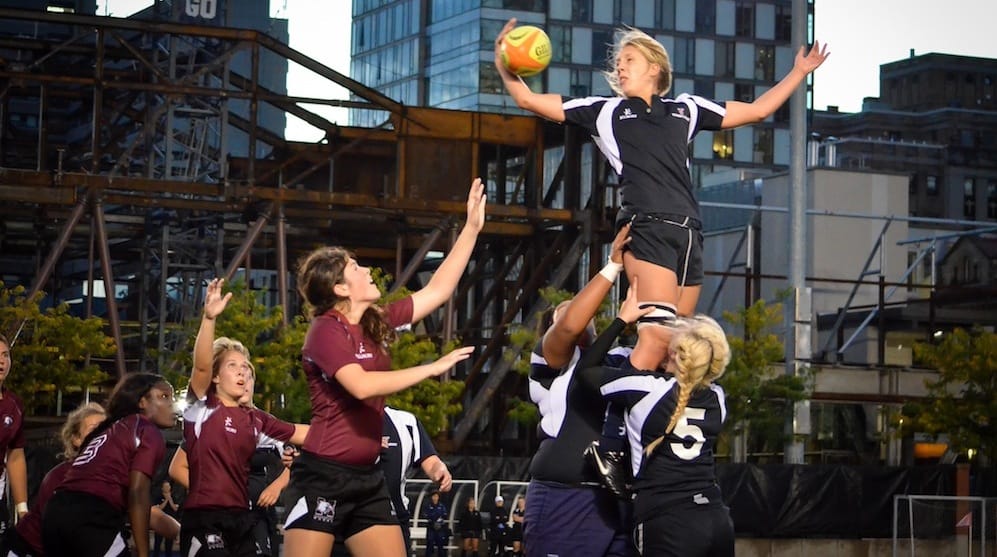This past week, the University of Toronto Faculty of Kinesiology and Physical Education released a proposal for the revised intercollegiate sports model. It includes an overview of the reasons for the model’s update, its goals, and the proposed categorization of all 44 intercollegiate teams and the services and recourses provided to them.
The newly proposed model was created by a committee that was appointed by the dean of the faculty to review the current model. In early 2013 consultations were made with teams, alumni, faculty, staff, students, and media in order to gain feedback on the proposed criteria for the sports model.
 The update is being proposed in an attempt to rectify various problems that the faculty believes result from the current model. They include Varsity Blues teams’ lack of provincial and national success and “the magnitude of the resources required to comply with the regulatory and risk management issues associated with the current breadth and size of the intercollegiate sports programming.” The new model may also improve the management of financial, infrastructural, human, and medical resources within the program.
The update is being proposed in an attempt to rectify various problems that the faculty believes result from the current model. They include Varsity Blues teams’ lack of provincial and national success and “the magnitude of the resources required to comply with the regulatory and risk management issues associated with the current breadth and size of the intercollegiate sports programming.” The new model may also improve the management of financial, infrastructural, human, and medical resources within the program.
The goals of the new model are all created in an attempt to sustain the new structure over a long period of time. Other directly stated goals include that the model “must be sustainable,” “must allow for competitive success,” and “must demonstrate commitment to academic success.”
Annually, teams will be reviewed based on various elements included in the model “to assess whether the new model has led to improvements.” These include “academic success of student athletes; students’ perceptions of their student experiences; rates of graduation, retention, and recruitment success of student athletes; sport performances of athletes and teams; magnitude of the contribution to an enhanced sense of campus spirit and school pride.”
The 44 intercollegiate teams are sorted into three categories, all provided with different levels of financial resources, human resources, sport medicine support, and access to the university’ athletic facilities.
University Division
In the “University Division,” teams will receive the strongest support from the university. The teams will be provided with strong support in the Ontario University Athletics (OUA) and Canadian Intercollegiate Sport (CIS) organizations, funding for their regular season, playoffs, and partial funding for out-of-conference competition — such as exhibition competition out of province or out of country.
The teams will be provided with a full 12-month training program, full access to university athletic facilities year-round, year-round medical support, access to “IC strength and conditioning and sport science,” full time or part time coaches (head coaches as well as assistant coaches), and strong human resources support in event, sport information, program, academic, alumni, and recruitment.
Toronto Division
The “Toronto Division” provides similar support to teams as the “University Division,” but only at the provincial level, rather than both the provincial and national tiers.
Teams in this category will receive funding for their regular season and OUA playoffs, a partial-year (6–8 months) training program, part-time unpaid coaches who will receive an honorarium, access to athletic facilities and medicine during the academic year only, partial access to ic strength and conditioning, and human resources support in event and sport information in-season only.
Blue and White
The final division is the “Blue and White.” In the last sport model, only three teams sat in the lowest level (that of “club teams”), but, if the proposed model is approved, the three teams will be joined by 18 more intercollegiate teams.
Without the same level of support as the “University Division” and the “Toronto Division,” the teams in the “Blue and White” division can compete against other intercollegiate teams in the province — as part of the OUA, or in the intercollegiate league in which the sport is organized — during the duration of its season. The teams will be provided with resources in-season only.
At this level, the teams will receive partial funding for athlete preparation and apparel, the teams’ championships, and their part-time coaches’ honoraria. The teams will have 4–6-month training schedules, access to athletic facilities and medicine in-season only, and no access to IC strength and conditioning. Any publicity (“event management and sport information”) will be led by students or coaches, rather than the university.


